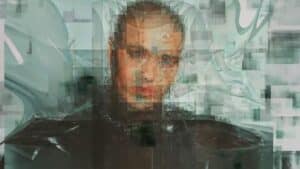The world of microbiology has been shaken by a groundbreaking discovery that challenges our fundamental understanding of life itself. In July 2025, researchers from Canada and Japan unveiled Sukunaarchaeum mirabile, a microscopic entity that exists in the blurry borderland between living organisms and viruses. This remarkable finding not only pushes the boundaries of biological classification but may potentially rewrite textbooks on cellular evolution.
The mysterious entity blurring life’s boundaries
Named after a diminutive Japanese deity, Sukunaarchaeum possesses one of the most compact genomes ever documented in the scientific literature. With a mere 238,000 base pairs, this genome is less than half the size of the previously known smallest archaeal genome. This extraordinary minimalism raises profound questions about what constitutes a living organism.
Unlike conventional microbes, Sukunaarchaeum displays a fascinating hybrid nature. It shares characteristics with both cellular life forms and viruses, occupying an unprecedented middle ground that challenges established biological categories. The creature was discovered almost by accident when molecular biologist Ryo Harada and his team at Dalhousie University were examining marine plankton DNA.
“We found genetic material that matched nothing in our databases,” noted the research paper published on the bioRxiv server. “Further analysis revealed it belonged to the Archaea domain—ancient microorganisms believed to be evolutionary precursors to complex cells.”
In 2019, Iceland Approved the 4-Day Workweek: Nearly 6 Years Later, All Forecasts by Generation Z Have Come True
At 94, He’s One of Apple’s Biggest Shareholders, and Doctors Can’t Explain How He’s Still Alive-Coca-Cola and McDonald’s Are Part of His Daily Routine
Redefining cellular capabilities and limitations
What makes Sukunaarchaeum truly remarkable is its unusual combination of abilities and dependencies. Like viruses, it relies heavily on a host organism for numerous biological functions. However, unlike viruses, it can independently construct its own ribosomes and messenger RNA—fundamental components for translating genetic code into proteins.
The genome analysis reveals an organism singularly focused on replication, having shed virtually all other metabolic machinery. This extreme specialization forces Sukunaarchaeum to depend entirely on its host for:
- Energy production
- Nutrient acquisition
- Metabolic processes
- Cellular building blocks
- Waste management
This peculiar relationship with its host places Sukunaarchaeum in an evolutionary gray area that scientists are still working to categorize properly. The traditional definitions separating viruses from cellular life have suddenly become insufficient in the face of this discovery.
It races through the universe at 300,000 km/s - and never runs out of energy
Beneath your feet: an ancient forgotten continent resurfaces in Europe
Evolutionary implications and scientific impact
The discovery of Sukunaarchaeum provides a potential missing link in our understanding of how complex cellular life evolved. This organism may represent an intermediate evolutionary stage between viruses and fully autonomous cells, offering a glimpse into biological history.
| Characteristic | Viruses | Sukunaarchaeum | Typical Cells |
|---|---|---|---|
| Independent protein synthesis | No | Yes | Yes |
| Self-sufficient metabolism | No | No | Yes |
| Ribosome production | No | Yes | Yes |
| Host dependency | Complete | High | Low/None |
The research team emphasized that this discovery demonstrates nature’s resistance to human categorization. “If Sukunaarchaeum teaches us anything,” they wrote, “it’s that biological reality exists on a continuum rather than in neat boxes.”
Scientists are now investigating whether similar organisms might exist elsewhere, potentially constituting an entirely overlooked branch of life. This paradigm-shifting discovery reminds us that even in 2025, fundamental biological revelations remain possible.
As researchers continue studying this anomalous entity, we may need to reconsider not just our definition of life but also our understanding of how cellular complexity emerged over billions of years of evolution. Sukunaarchaeum mirabile stands as a humbling reminder that nature’s innovations still have the power to surprise even our most advanced scientific minds.







